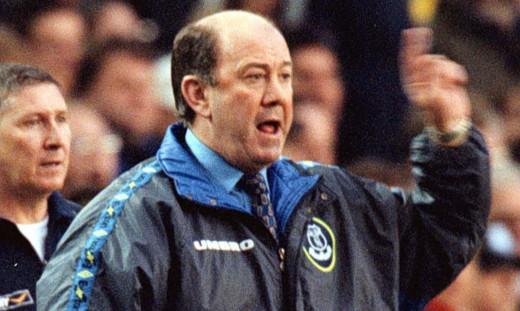The death of Howard Kendall will be mourned throughout the football community but nowhere more keenly than Goodison Park, the home of his greatest triumphs as player and manager.
He will be remembered for many things becoming the youngest Wembley finalist as a 17-year-old in 1964, forging a title-winning ‘holy trinity’ alongside Alan Ball and Colin Harvey, being the last English coach to win a major European competition.
But there is arguably a simpler way to define his time in the game: Everton’s greatest ever servant.
Born in County Durham in May 1946 as a miner’s son, he played football as a defender for Washington Grammar School.
Pushed to pursue a life in football by his father, Jack, Kendall was signed by Preston and his parents moved to Lancashire in support.
Fate took him back to the north-east for his debut as a 16-year-old at Newcastle’s St James’ Park, and just a year later he was a record-breaker.
At just 17 years and 345 days he became the youngest player in a Wembley cup final, though a 3-2 win for West Ham spoiled his big day.
But it was not until he became a Toffee in an £85,000 deal in 1967 that Kendall’s story truly began.
Kendall, now a midfielder, dovetailed with Ball and Harvey in memorable fashion and the trio were key to winning the First Division title in 1969/70.
It was the peak of a playing career that saw Kendall spend three years as Everton captain before spells at Birmingham, Stoke and Blackburn.
At Rovers he became player-manager, winning promotion to the second tier before heading back to Stanley Park.
He wore the blue shirt just four more times before retiring to concentrate on his management duties.
He was just 52 when the curtain came down on his top-flight managerial days, signing off with a curious epilogue in Piraeus.
Kendall applied for a couple of jobs thereafter, including Ipswich, but his next meaningful appointment came in 2005 as an inductee into English football’s Hall of Fame.
